ROAD RASH WOUND CARE 101
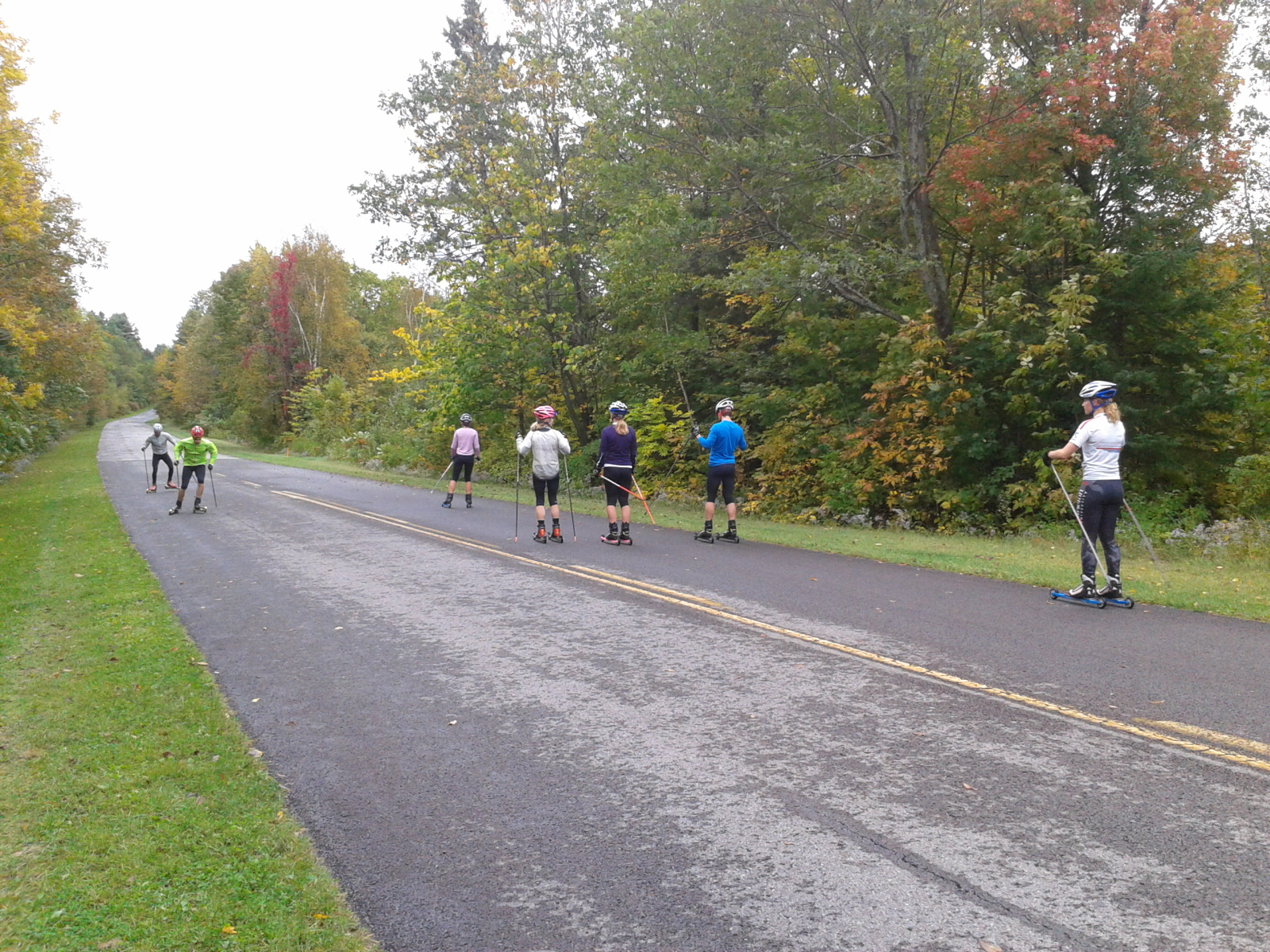
Members of the team out on a Sunday AM. Roads are notably less congested!
It’s that time of year again – the Gatineau parkways are packed on Saturday mornings with every type of wheeled recreational implement possible, including TONS of roller skiers. While the parkways are unquestionably the best training surface in the summer and fall for us skiers, they can also be rather unforgiving, especially compared to the fluffy white stuff, when it comes to falling. This past weekend I experienced a pretty bad case of road rash. My knee skids were both painful and incredibly inconvenient, as they caused me to stop my time trial workout and get some medical aid (thank you, Lindsey Chapman!). I managed to scrape myself up pretty good through my tights, though I was thankful that there wasn’t any gravel in the wound.
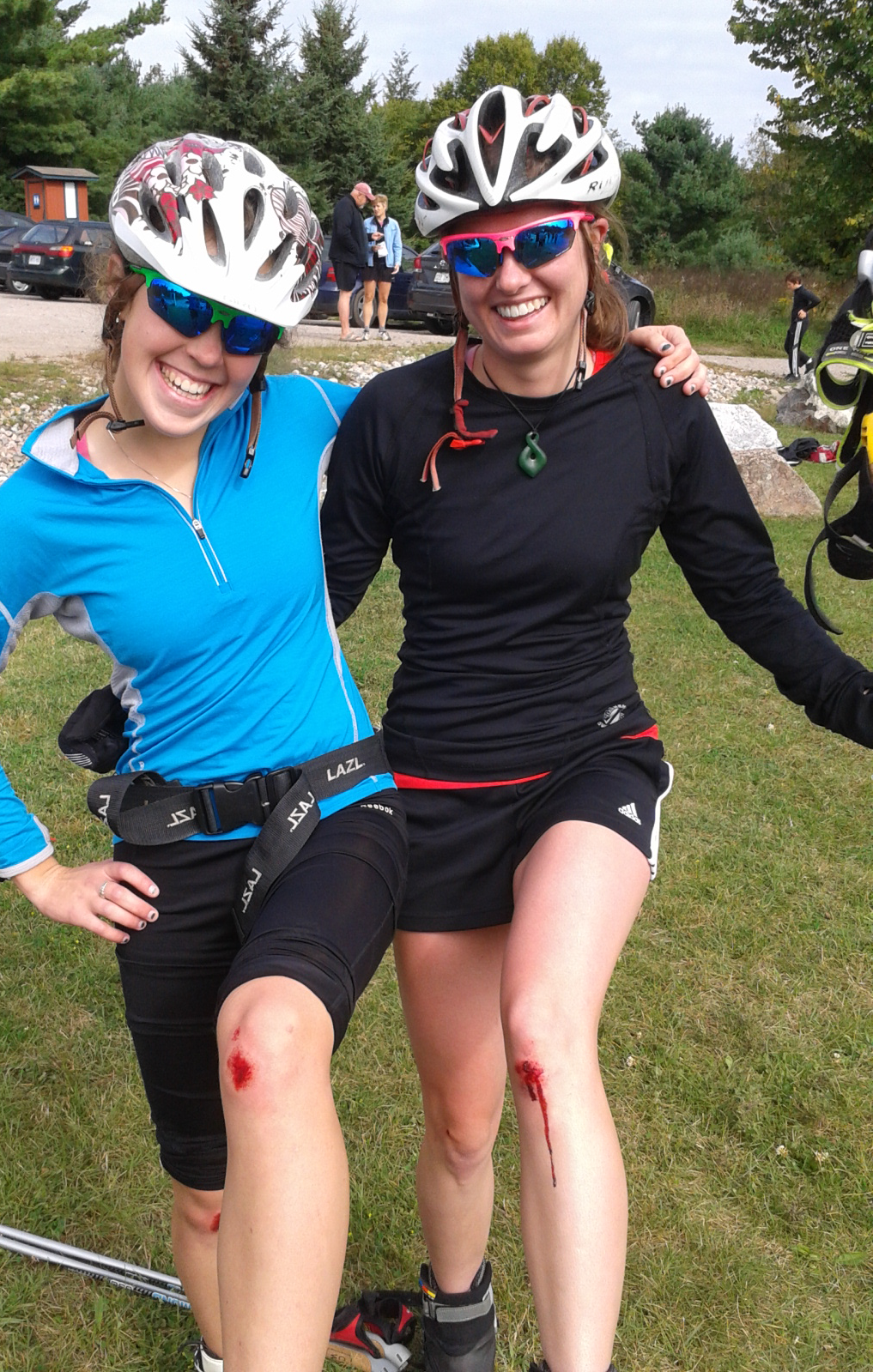
Holly & Lindsey doing the scraped-up can-can! (Lindsey sadly fell after she helped me with my knees!)
I received lots of advice:
“Use vitamin E lotion to avoid unsightly scars” said Coach John. XCOttawa teammate Sheila suggested I use Tegaderm, which would keep the wound moist and prevent big scabs. Teammate Andre used a second-skin type of bandage for his hip and elbow wounds (seen here, if you’re interested: http://www.xcottawa.ca/articles.php?id=2637). In at Carleton Athletic Therapy, Mel suggested Manuka honey because of its intense antibacterial properties. All these solutions stand in contrast to traditional “dry-bandaging” methods. This new-school approach to wound management has been strongly favoured in sports medicine.
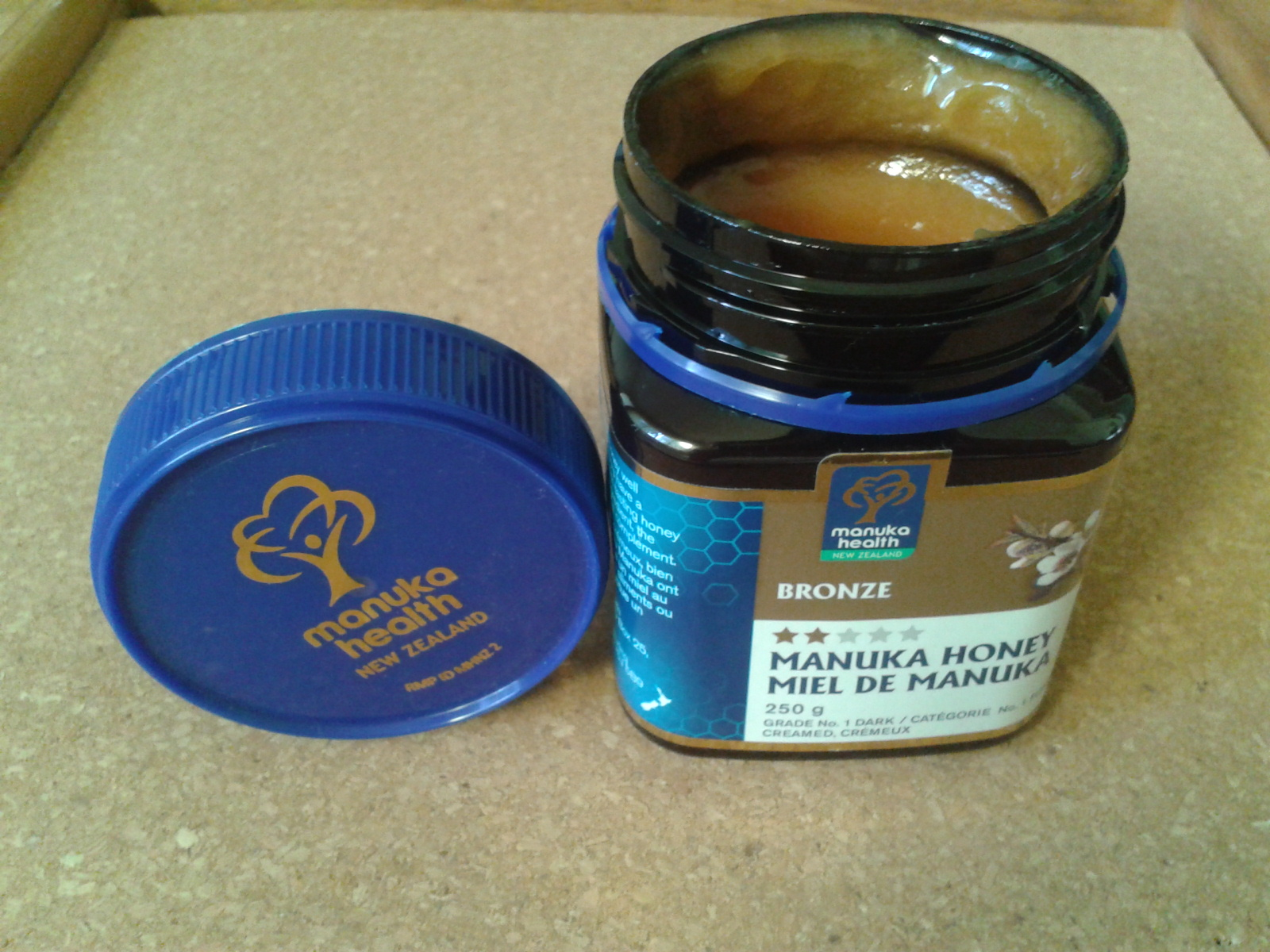
Manuka honey -- tastes great, and it works!
I took the advice and ran with it (literally!). Fearing the pain and immobility of scabs on my body’s biggest joints, I sought remedies which would keep the cuts saturated in antibacterial ointments and moist so they can heal without drying out and stiffening up. After doing a bit of research, I bought some Tegaderm bandages, Manuka honey, an alcohol free witch hazel astringent and some non-adherent sterile pads. For the first few days, I used the Tegaderm bandages with Polysporin. This worked well for when the wounds were still leaking…ugh. The witch hazel astringent cleaned and moisturized the cuts (it’s alcohol-free and has Aloe Vera extract). Then I switched to the Manuka honey and non-adherent pads, which has been working great! I put the honey on the pad and the use medical tape to secure the bandage to my knee. New skin is forming, and I rollerskied all weekend without fear of cracking scabs by bending my knees.
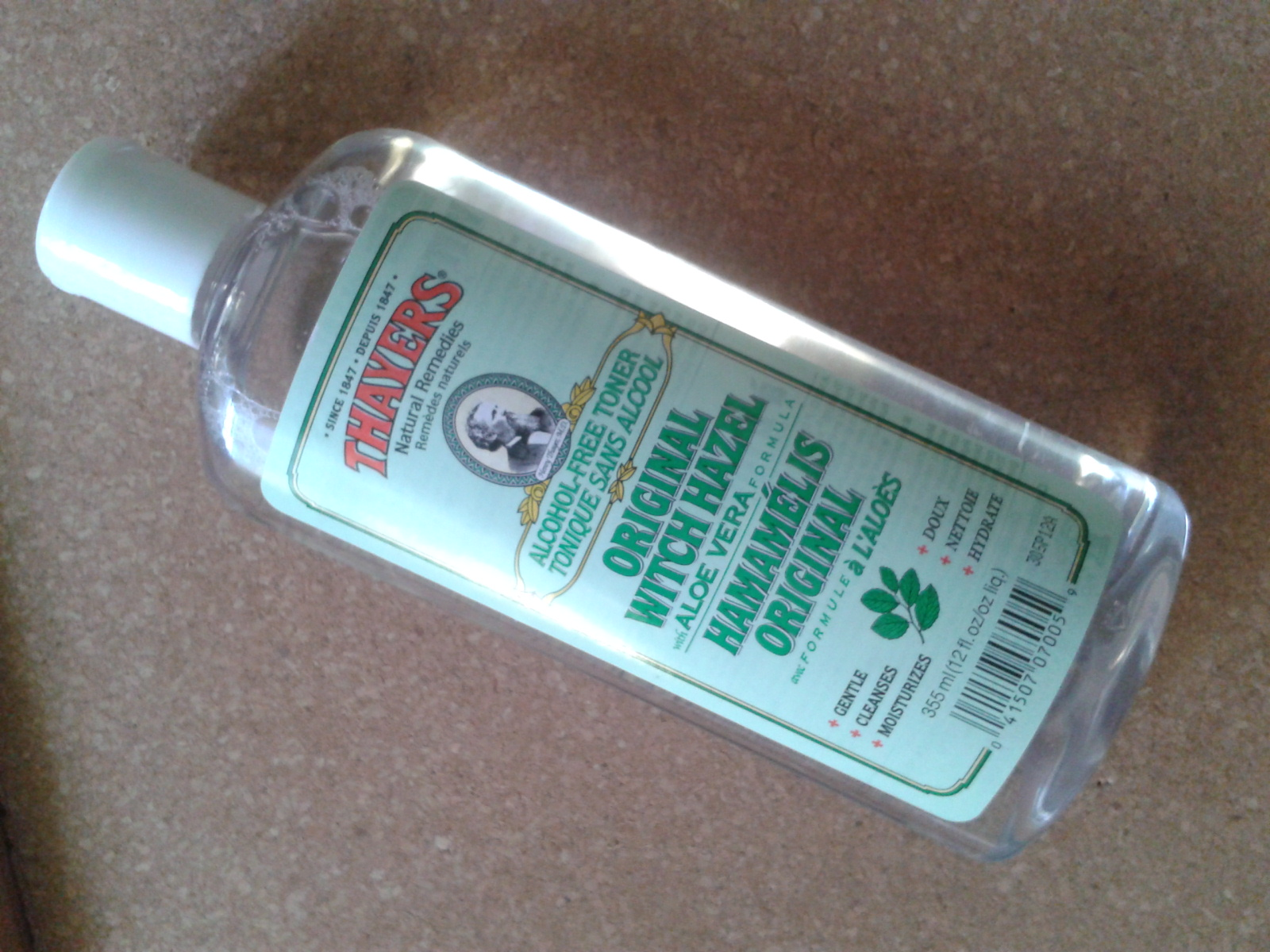
Great for a whole bunch of stuff! Insect bites, wound cleansing, even reducing the size of your pores!
I also learned that dressings which provide a water-tight and air-tight barrier over the wound are called occlusive dressings. While typically used for large chest or abdominal wounds, they are being used increasingly frequently for smaller superficial injuries (like mine).
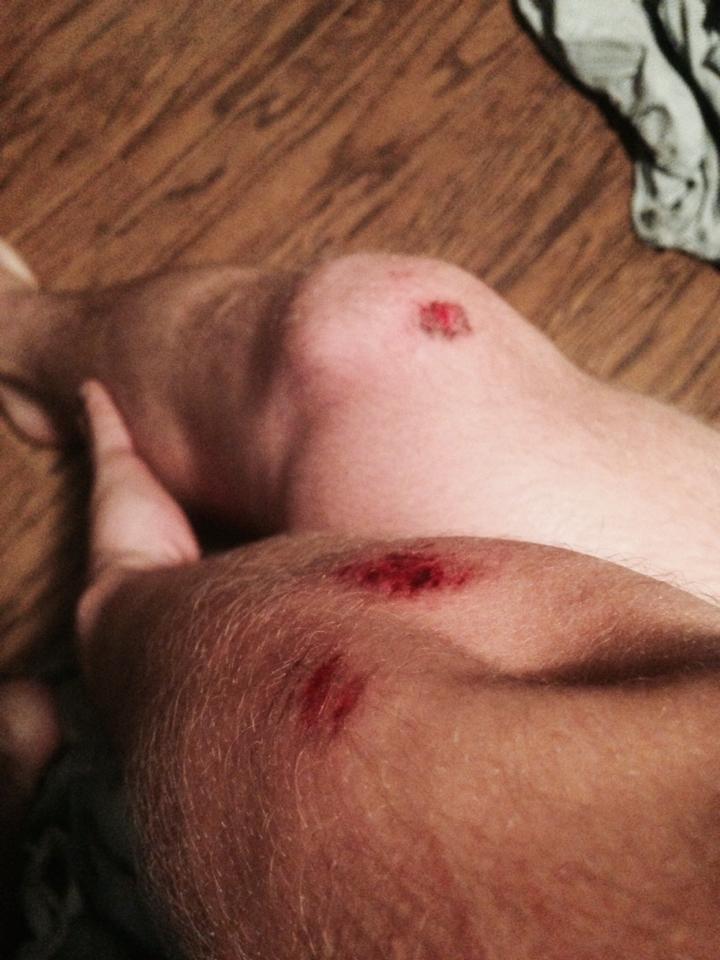
Matt took a tumble this weekend! Not too bad of a scrape.
BENEFITS OF AN OCCLUSIVE DRESSING:
Moist environments encourage cell growth! Wounds need to form new skin tissue and therefore new skin cells. Remedies that create the optimal conditions for new cell growth (i.e. moist and vitamin rich) will ensure the wound heals more quickly.
Scabs won’t form! The formation of a scab is the body’s form of a bandage over the wound site. Congealed blood platelets and fibrin act as a protective barrier to the new skin cells forming beneath. Unfortunately, scabs on joints are highly inconvenient because they often tear off prematurely due to movement of the joint, leaving the new skin susceptible to re-injury and infection. Using a moist dressing prevents the formation of a scab but still protects the wound so it can repair itself.
Prevents scarring! No scab often means no scarring because there is no chance of a scab falling off prematurely. As long as the dressing is used until the skin has finished healing, scarring will be minimal.
Mobility! As I mentioned above, the absence of a scab means you’ll be able to bend your knees, elbows and fingers without worrying about ripping off your scab. For me, that means running, rollerskiing, doing Tuesday morning intervals and squats at the gym without restrictions to my movement!
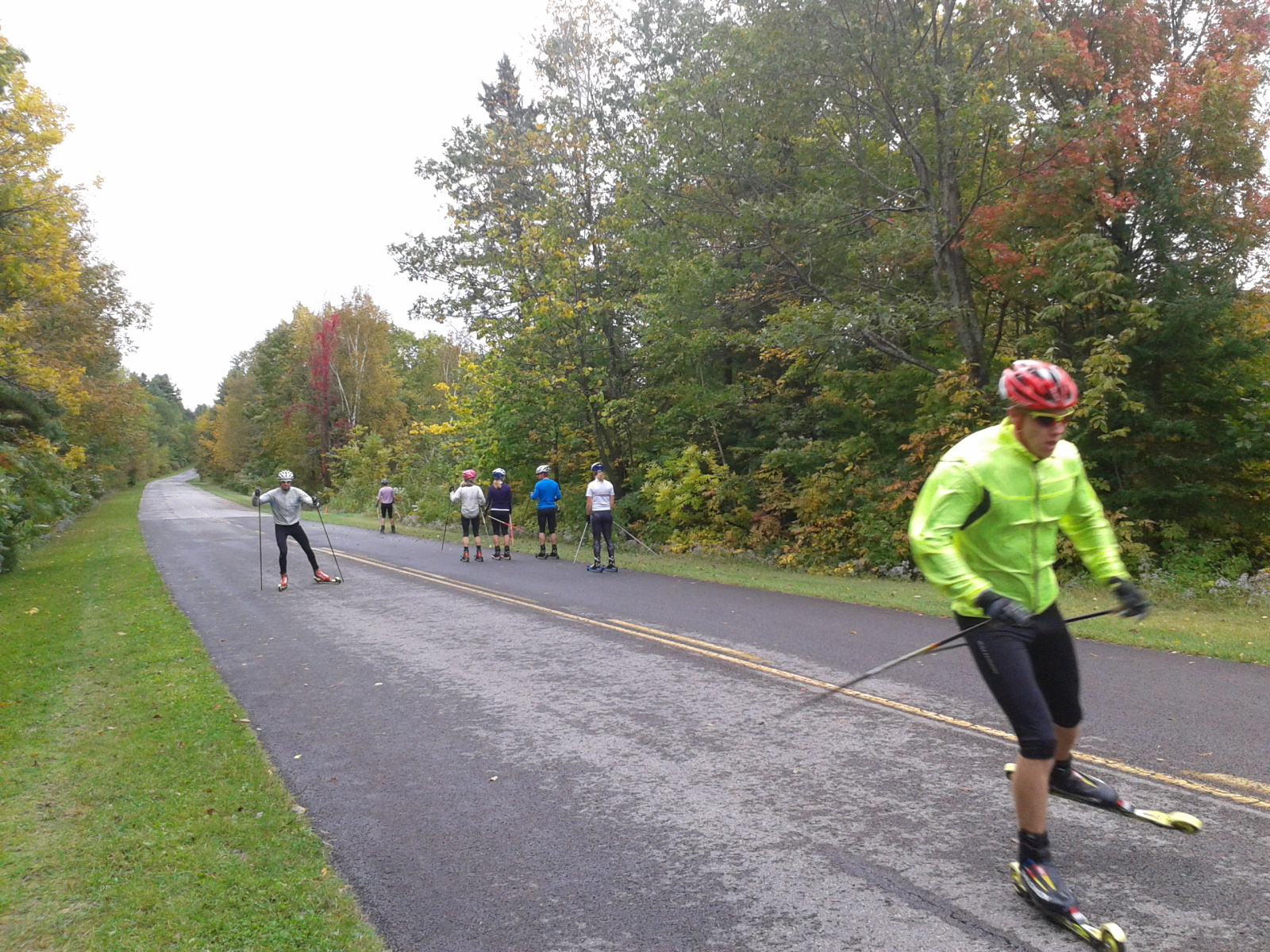
Andre (right) and Karl (left) sprinting along -- they ain't scared of no pavement!
I’m definitely going to keep using the moist dressing technique for this road rash. Thanks to everyone for the advice. Eating pavement occasionally might be inevitable for a Nordic skier, but hopefully we can all deal with our wounds a little better with tips like these!
- Holly
I used the following articles for reference:
*Agren MS et al. Occlusion versus air exposure on full-thickness biopsy wounds. Journal of Wound Care; 2001, Vol.10, No. 8: 301-304
*Eaglstein, W. H. (2001), Moist Wound Healing with Occlusive Dressings: A Clinical Focus. Dermatologic Surgery, 27: 175–182. doi: 10.1046/j.1524-4725.2001.00299.x
*Rheinecker, Scot B. (1995), Wound Management: The Occlusive Dressing. Journal of Athletic Training; June 1995, 30(2): 143-144, 146.


